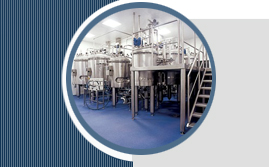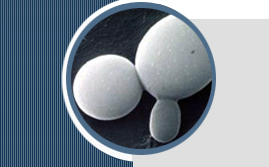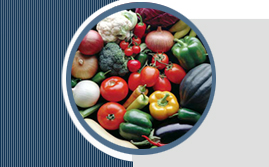








The below titles are part of useful supporting publications from various well-known journal to ensure the beneficialness of yeast productsMannanoligosaccharide (MOS) Prebiotic -Effect of dietary mannan oligosaccharides and(or) pharmacological additions of copper sulfate on growth performance and immunocompetence of weanling and growing/ finishing pigs. (For more detail please visit http://jas.fass.org/)-Effects of Supplemental Fructooligosaccharides and Mannanoligosaccharides on Colonic Microbial Populations, Immune Function and Fecal Odor Components in the Canine. (For more detail please visit http://www.nutrition.org/)-Effect of Dietary Mannan Oligosaccharide on Broiler Breeder Production Traits and Immunity. (For more detail please visit http://www.poultryscience.org/ps/) -Dietary supplementation with phosphorylated mannans improves growth response and modulates immune function of weanling pigs.(For more detail please visit http://jas.fass.org/) -Using Competitive Exclusion, Mannan-Oligosaccharide and Other Intestinal Products to Control Necrotic Enteritis. (For more detail please visit http://www.poultryscience.org/japr/ )
Effect of dietary mannan oligosaccharides and(or) pharmacological additions of copper sulfate on growth performance and immunocompetence of weanling and growing/finishing pigs M. E. Davis*, C. V. Maxwell*1, D. C. Brown*, B. Z. de Rodas*, Z. B. Johnson*, E. B. Kegley*, D. H. Hellwig*, and R. A. Dvorak† *Department of Animal Science, University of Arkansas, Fayetteville 72701 and †Alltech, Nicholasville, KY 40356 ABSTRACT Two experiments were conducted to determine the efficacy of mannan oligosaccharides (MOS) fed at two levels of Cu on growth and feed efficiency of weanling and growing-finishing pigs, as well as the effect on the immunocompetence of weanling pigs. In Exp. 1, 216 barrows (6 kg of BW and 18 d of age) were penned in groups of six (9 pens/treatment). Dietary treatments were arranged as a 2 ื 2 factorial consisting of two levels of Cu (basal level or 175 ppm supplemental Cu) with and without MOS (0.2%). Diets were fed from d 0 to 38 after weaning. Blood samples were obtained to determine lymphocyte proliferation in vitro. From d 0 to 10, ADG, ADFI, and gain:feed (G:F) increased when MOS was added to diets containing the basal level of Cu, but decreased when MOS was added to diets containing 175 ppm supplemental Cu (interaction, P < 0.01, P < 0.10, and P < 0.05, respectively). Pigs fed diets containing 175 ppm Cu from d 10 to 24 and d 24 to 38 had greater (P < 0.05) ADG and ADFI than those fed the basal level of Cu regardless of MOS addition. Pigs fed diets containing MOS from d 24 to 38 had greater ADG (P < 0.05) and G:F (P < 0.10) than those fed diets devoid of MOS. Lymphocyte proliferation was not altered by dietary treatment. In Exp. 2, 144 pigs were divided into six pigs/pen (six pens/treatment). Dietary treatments were fed throughout the starter (20 to 32 kg BW), grower (32 to 68 kg BW), and finisher (68 to 106 kg BW) phases. Diets consisted of two levels of Cu (basal level or basal diet + 175 ppm in starter and grower diets and 125 ppm in finisher diets) with and without MOS (0.2% in starter, 0.1% in grower, and 0.05% in finisher). Pigs fed supplemental Cu had greater (P < 0.05) ADG and G:F during the starter and grower phases compared to pigs fed the basal level of Cu. During the finisher phase, ADG increased when pigs were fed MOS in diets containing the basal level of Cu, but decreased when MOS was added to diets supplemented with 125 ppm Cu (interaction, P < 0.05). Results from this study indicate the response of weanling pigs fed MOS in phase 1 varied with level of dietary Cu. However, in phase 2 and phase 3, diets containing either MOS or 175 ppm Cu resulted in improved performance. Pharmacological Cu addition improved gain and efficiency during the starter and grower phases in growing-finishing pigs, while ADG response to the addition of MOS during the finisher phase seems to be dependent upon the level of Cu supplementation. Keywords: Copper, Growth, Mannans, Pigs Credited by:
Effects of Supplemental Fructooligosaccharides and Mannanoligosaccharides on Colonic Microbial Populations, Immune Function and Fecal Odor Components in the CanineKelly S. Swanson, Christine M. Grieshop, Elizabeth A. Flickinger, Neal R. Merchen and George C. Fahey, Jr. Division of Nutritional Sciences and Department of Animal Sciences, University of Illinois, Urbana, IL ABSTRACT Fructooligosaccharides (FOS 4) and mannanoligosaccharides (MOS) are examples of prebiotics, which are defined as nondigestible food ingredients that beneficially affect the host by selectively stimulating the growth and/or activity of one or a limited number of bacteria in the colon, and thus improve host health (1). Although some information is available on the effects of feeding FOS and MOS in selected species, there is a paucity of information in companion animals. In this experiment, we investigated whether supplemental FOS and (or) MOS influenced immune function, microbial populations and the concentration of fermentative end products in the large bowel of the canine. Keywords: dogs ● oligosaccharides ● intestinal microbiota ● colon health Credited by: Effect of Dietary Mannan Oligosaccharide on Broiler Breeder Production Traits and Immunity R. G. Shashidhara1 and G. DevegowdaDepartment of Poultry Science, Veterinary College, University of Agricultural Sciences, Hebbal, Bangalore-560 024, India ABSTRACT The effects of mannan oligosaccharide (MOS) supplementation in broiler breeder diets on egg production, hatchability, fertility, and immunity were examined by randomly allocating 60-wk-old breeders to eight replicates (four replicates of two diet treatments) in a cage trial, and 42-wk-old broiler breeders to 12 replicates (six replicates of two dietary treatments) in a deep litter trial. Breeders were fed corn-soybean meal based diets with (MOS group) or without MOS or antibiotics (control group). Egg production, hatchability, and related parameters were measured for 8 and 12 wk in the cage trial and deep litter trial, respectively. In the cage trial, semen quality traits and antibody responses were recorded after 6 wk of supplementation. Antibody responses in the parents and progeny were measured after 4 wk of supplementation in the deep litter trial. Dietary MOS had no consistent influence on egg production in either trial. In the cage trial, higher (P ≤ 0.05) hatchability, concomitant with consistently lower infertile and dead-in-shells (DIS), was evident in the MOS group. Furthermore, sperm density increased in the MOS group. Conversely, no difference was observed in terms of proportion of live sperm. In the deep litter trial hatchability on total eggs set and DIS were not affected by MOS inclusion in the diet, but hatchability on fertile eggs set and fertility was higher (P ≤ 0.05) in the MOS group during the second, third, and fourth periods. Antibody responses against infectious bursal disease virus (IBDV) were higher (P ≤ 0.05) in the MOS group in both trials. Maternal antibody titers in progeny were also influenced (P ≤ 0.05) by MOS supplementation. These data show that supplemental MOS improved sperm density, antibody titers, and all the production traits excluding egg production in the broiler breeders. Keywords: mannan oligosaccharide, egg production, hatchability, dead-in-shell, antibody titer Credited by: Dietary supplementation with phosphorylated mannans improves growth response and modulates immune function of weanling pigs M. E. Davis*2, C. V. Maxwell*, G. F. Erf†, D. C. Brown*, and T. J. Wistuba‡ *Department of Animal Science and †Center for Excellence in Poultry Science, University of Arkansas, Fayetteville 72701 and ‡Department of Agricultural and Human Sciences, Morehead State University, Morehead, KY 40351 ABSTRACT Phosphorylated mannans derived from the yeast cell wall of Saccharomyces cerevisiae may beneficially modulate immune function in the weanling pig, possibly providing an alternative to the use of dietary growth-promoting antibiotics. Therefore, in this study, 32 pigs averaging 19 d of age and 5.7 ± 0.2 kg initial BW were randomly assigned to 16 pens in an environmentally controlled nursery to determine the effects of dietary supplementation with phosphorylated mannans on growth and immune function. Average daily gain and G:F ratio increased (P < 0.05) when pigs were fed diets supplemented with mannans from d 0 to 14 after weaning and in the overall experiment. Percentage of neutrophils was lower (P < 0.08) and percentage of lymphocytes was higher (P < 0.05) in blood from pigs fed mannans than when pigs were fed the basal diet. Lamina propria macrophages isolated from pigs fed diets containing mannans phagocytosed a greater (P < 0.05) number of sheep red blood cells (2.63 ฑ 0.11) than did lamina propria macrophages isolated from pigs fed the basal diet (2.31 ฑ 0.11). On d 19 after weaning, pigs fed diets supplemented with mannans tended to have a greater (P < 0.10) percentage of CD14+ lamina propria leukocytes than did pigs fed the basal diet. On d 21 following weaning, the percentage of CD14+MHCII+ leukocytes isolated from lamina propria tissue tended (P < 0.10) to be lower when pigs were fed mannans than when pigs were fed the basal diet. Pigs fed diets containing mannans had a lower (P < 0.05) ratio of CD3+CD4+:CD3+CD8+ T lymphocytes isolated from jejunal lamina propria tissue only on d 21 after weaning compared with pigs fed the basal diet. Supplementation of mannans in the diets of weanling pigs improved gain and efficiency, and intermittently affected selected components of the young pigs’ immune function both systemically and enterically. Keywords: Acquired Immunity, Intestinal Immunity, Mannan, Phagocytosis, Swine Credited by:
Using Competitive Exclusion, Mannan-Oligosaccharide and Other Intestinal Products to Control Necrotic Enteritis C. L. Hofacre,*,1 T. Beacorn,* S. Collett,† and G. Mathis‡*Department of Avian Medicine, College of Veterinary Medicine, University of Georgia, Athens, Georgia 30602; †Alltech Inc., Biotechnology Center, 3031 Catnip Hill Pike, Nicholasville, Kentucky 40356; and ‡Southern Poultry Research, Inc., 2011 Brock Road, Athens, Georgia 30607
ABSTRACTClinical and subclinical necrotic enteritis (NE) caused by the ubiquitous bacteria Clostridium perfringens can have a significant economic impact in broiler chickens. This impact is especially apparent when antibiotic feed additives are not used. In this study, the effectiveness of five nonantibiotic feed additives and two competitive exclusion (CE) cultures were compared using an NE challenge model. Untreated male broiler chickens housed in an environmentally controlled facility were challenged with C. perfringens and had high mortality, gross intestinal lesions, poor feed utilization, and reduced body weights. Broilers treated with a defined lactic acid bacterial CE culture at 1 d and fed a diet containing 2 g/ton of mannan-oligosaccharide had the lowest mortality from necrotic enteritis. The feed efficiency of this combined treatment was similar to that of broilers fed a diet containing 50 g/ton of bacitracin methylene disalicylate. The treatment in which broilers were given an undefined CE or the mannan-oligosaccharide alone, as well as three other feed additives, did not have any significant effect on feed efficiency, mortality, or body weight over the NE challenge control birds. The findings of this study are very important in developing nutritional strategies to provide options for prevention of NE without continuously using antibiotics in feed. Keywords: competitive exclusion, mannan-oligosaccharide, bacitracin methylene disalicylate (BMD-50), chicken, Clostridium perfringens, necrotic enteritis Credited by: |
||
| |
|
||||
 |
 |
|
|||
| |
|||||
| |
|
||||
 |
|
||||
Copyright ©2005 . Specialty Biotech Co.,Ltd. All Rights Reserved. Amatanakorn Industrial Park 700/137 Moo 5, Klongtumroo Muang, Chonburi 20000 ThailandTel +66 (0)3845-8698 Fax +66 (0)3845-8697 Email: contact@sbtthai.com | |
||||
| |
|
||||
| |
|||||
| |
|||||
| |
|
|
|||
| |
|
||||
| |
|
||||
 |
|
||||
|
|
||||